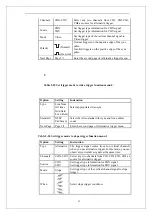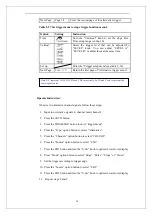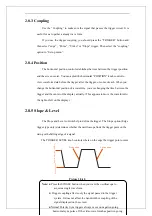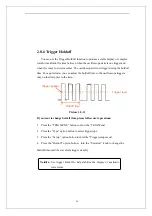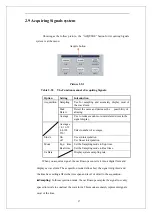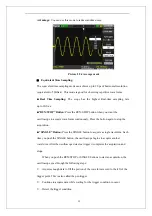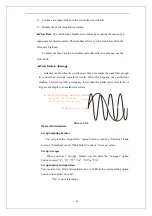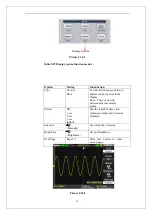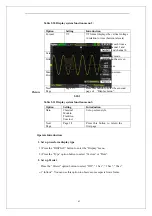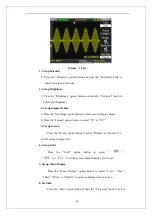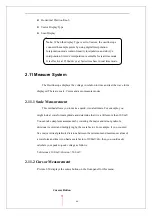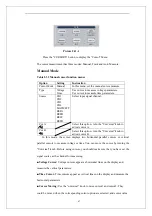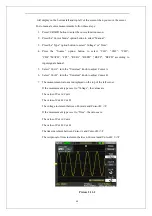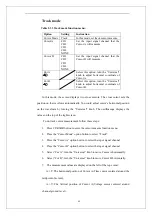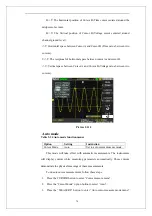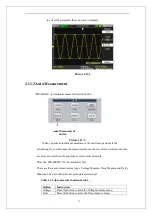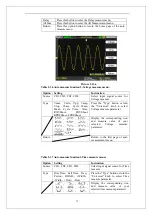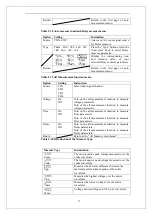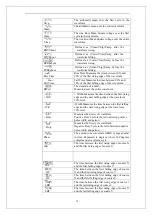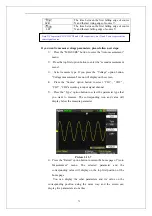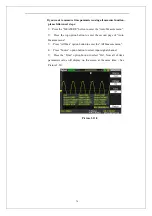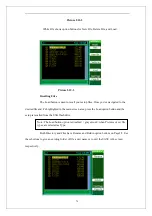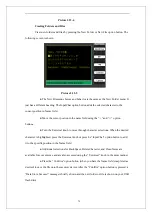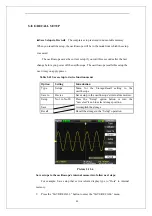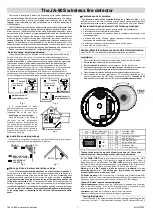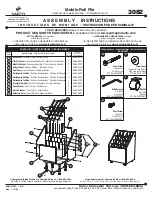
65
“Classical”, “Modern”, “Traditional” or “Succinct”.
2.10.1 X-Y Format
Use the XY format to analyze phase differences, such as those represented by
Lissajous patterns. The format plots the voltage on channel 1 against the voltage on
channel 2 or plots the voltage on channel 3 against the voltage on channel 4, where
channel 1(or channel 3) is the horizontal axis and channel 2 (or channel 4)is the
vertical axis. The oscilloscope uses the untriggered Sample acquisition mode and
displays data as dots.
XY mode has a breakthrough that trad oscilloscopes restrict sampling rate at
1MSa/s
,
SDS1000C series support 5KSa/s
~
200MSa/s (1-2.5-5 sequence) adjusted;
SDS1000CM series support 25KSa/s
~
100MSa/s (1-2.5-5 sequence) adjusted ;
SDS1000CE series support 5KSa/s
~
1GSa/s (1-2.5-5 sequence) adjusted and
SDS1000CF series support 10Ksa/s
~
1GSa/s (1-2.5-5 sequence) adjusted.
Operation steps
:
●
Channel 1
(
or Channel 3
)
“Volt/div”and vertical “POSITION” set up the
horizontal scale and position.
●
Channel 2
(
or Channel 4
)
“Volt/div”and vertical “POSITION” set up the
horizontal scale and position.
●
Turn the “S/div” knob to adjust the sampling rate
●
The following functions are forbidden at XY display form:
●
Benchmark wave form and wave mathematic
●
Cursor
●
Auto
(
resets display format to YT
)
●
Trigger Control
Note
:
The oscilloscope can capture a waveform in normal YT mode
at any sampling rate. You can view the same waveform in XY mode.
To do so, stop the acquisition and change the display format to XY.
Summary of Contents for SDS1000 Series
Page 146: ...138 Coupling DC...



